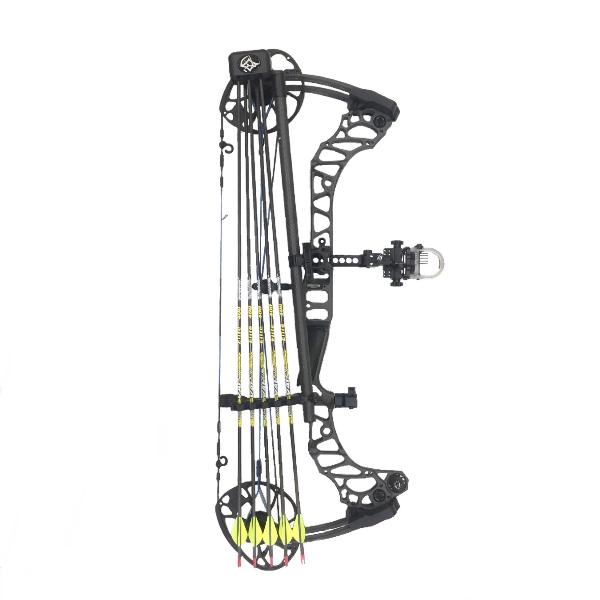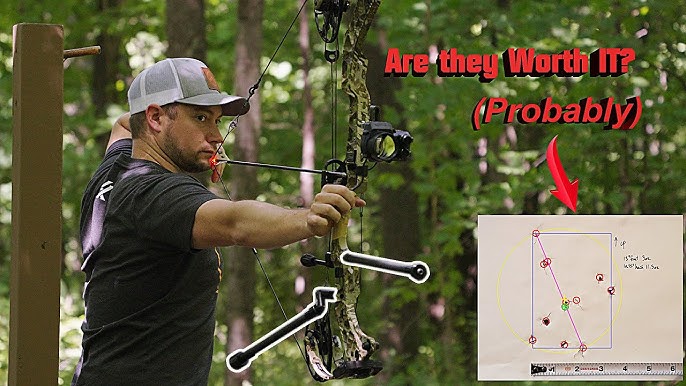Attain Bullseye Accuracy: Expert Tips on Picking and Making Use Of the Best Bow Stabilizer for Archery
While ability and method play a substantial function, the significance of picking and making use of the ideal bow stabilizer must not be ignored. A bow stabilizer is a crucial accessory that aids reduce bow movement, lower resonances, and eventually improve precision. Concern not, as this discussion will certainly provide expert pointers on picking the excellent bow stabilizer for your archery needs.
Relevance of Bow Stabilizers
The significance of bow stabilizers in archery can not be overstated. Bow stabilizers play an important function in reducing bow movement, lowering torque, and enhancing accuracy throughout the shooting procedure. When an archer releases an arrowhead, the bow tends to create resonances and recoil due to the energy transfer. These vibrations can negatively affect the accuracy and uniformity of the shot. Nevertheless, by attaching a stabilizer to the bow, these vibrations are taken in and dampened, causing a more steady and regulated shot.
Bow stabilizers likewise aid in maintaining balance and stability while releasing the arrow and aiming. They add weight to the front of the bow, which counteracts the weight of the arm or legs and devices at the back. This weight distribution helps in keeping the bow stable and decreases the tendency for it to guide or turn throughout the shooting procedure. Consequently, archers can achieve better objective and precision.
Moreover, bow stabilizers can additionally help in reducing the quantity of torque created by the archer's grip on the bow. When clutching the bow, the archer's hand can accidentally use torque, triggering the bow to rotate a little. This rotational pressure can result in disparities in the shot. The addition of a stabilizer aids neutralize this torque, leading to a more precise and consistent release.
Variables to Think About When Choosing a Stabilizer
To ensure ideal performance and precision in archery, it is vital to thoroughly take into consideration different factors when choosing a bow stabilizer. The first aspect to consider is the size of the stabilizer. Longer stabilizers offer greater security and equilibrium, but they might also include weight and make the bow much less manoeuvrable. Much shorter stabilizers, on the other hand, use more ability to move but might compromise some stability. It is necessary to locate the best equilibrium between security and maneuverability based upon your particular demands and shooting style.
Another element to consider is the weight of the stabilizer. Heavier stabilizers tend to offer even more security by minimizing resonances and lessening bow activity during the shot.
In addition, the kind of stabilizer likewise plays a role in its performance. Dynamic stabilizers, on the other hand, are developed to actively counterbalance the bow's movement throughout the shot.
Finally, think about the product and building of the stabilizer. Carbon fiber stabilizers are lightweight and offer superb vibration wetting, while light weight aluminum stabilizers are much more resilient and offer better security.
Various Types of Bow Stabilizers
There are numerous kinds of bow stabilizers readily available for archery fanatics to pick from. Each kind uses different attributes and benefits, enabling archers to tailor their equipment based on their private needs and preferences.

An additional kind of bow stabilizer is the side rod stabilizer. This kind includes several rods affixed to the side of the bow. Side pole stabilizers aid to counterbalance the weight of accessories, such as quivers and views, improving total balance and decreasing torque. They are commonly made use of in competitive archery, where precision and security are important.
Some bow stabilizers also include vibration-dampening innovation. These stabilizers are designed to soak up and dissipate vibrations, reducing hand shock and lowering noise. By lowering vibration, these stabilizers help to boost accuracy and give a smoother shooting experience.
Correct Setup and Adjustment Strategies

As soon as the stabilizer is set up, it is essential to adjust its position to attain the preferred balance and stability. Begin by trying out Bonuses with various lengths and positions of the stabilizer to locate the ideal feel for you. Some archers prefer a longer stabilizer for raised security, while others may favor a much shorter one for more ability to move. In addition, changing the angle of the stabilizer can help make improvements the balance of the bow.
To make certain ideal performance, it is advised to inspect the tightness of the stabilizer frequently. In time, movements and resonances can loosen the placing bolt, possibly impacting go to website the stabilizer's effectiveness. By occasionally tightening the screw and checking, you can keep a secure and protected connection.
Tips for Making The Most Of Stabilizer Performance
In order to take full advantage of the performance of your bow stabilizer, it is important to comply with these suggestions for optimum efficiency and precision. Longer stabilizers supply higher stability and balance, while larger stabilizers aid to lessen vibration and absorb shock.
Second of all, correct setup is essential. Make sure to attach the stabilizer firmly to your bow, making certain that it is straightened parallel and straight to the arrowhead shaft. Furthermore, check that the stabilizer does not interfere with your view photo or any various other devices on your bow.
When it pertains to using the stabilizer, it is necessary to maintain excellent type and technique. Maintain an unwinded hold on the bow, allowing the stabilizer to do its work of decreasing torque and keeping the bow constant throughout the shot. Concentrate on a regulated and smooth launch, avoiding any kind of unneeded movements that might affect the stability of the bow.
Last but not least, routine maintenance is essential for optimal stabilizer performance. Clean the stabilizer frequently to remove any dirt or particles that might influence its efficiency. In addition, check the stabilizer for any type of signs of wear or damages, and change it if necessary.
Verdict
In conclusion, selecting and utilizing the ideal bow stabilizer for archery is essential in accomplishing bullseye precision. By considering elements such as size, product, and weight, archers can pick a stabilizer that suits their needs.
A Click Here bow stabilizer is a critical device that helps reduce bow motion, lower vibrations, and ultimately improve precision - bow stabilizer. Carbon fiber stabilizers are light-weight and offer superb vibration moistening, while light weight aluminum stabilizers are more resilient and supply better stability.One popular type of bow stabilizer is the long rod stabilizer.An additional kind of bow stabilizer is the side rod stabilizer. Longer stabilizers supply better stability and balance, while heavier stabilizers aid to decrease vibration and soak up shock